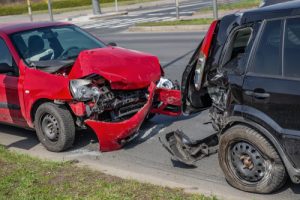Rear-End Collision Accidents in Michigan
The most common type of car accident is a rear-end collision. The injuries from a rear-end car accident can be severe, even if the motorists aren’t moving at a high rate of speed. Rely on an experienced Michigan car accident lawyer to help you get fair compensation for the pain and suffering you have experienced because of a car crash.
Circumstances That Can Lead to a Rear-End Accident
Rear-end collisions can happen at any time, though it’s common to see this type of crash at stop signs, intersections, or in heavy traffic. There are certain conditions and behaviors that make this kind of accident more likely to occur:
- Traffic jams: If a motorist is moving quickly but fails to notice there is a traffic jam ahead, they can collide into the car that is stopped in front of them. When traffic is barely moving, a low-impact rear-end collision can occur because a driver is too close to the car in front of them when they stop short.
- Tailgating: It’s every driver’s responsibility to maintain a safe following distance of three to four seconds. This time should be adjusted in bad weather, when changing lanes, approaching intersections, and especially in heavy traffic. Unfortunately, impatient motorists can ride the tail of the car ahead of them, making a collision almost inevitable.
- Distraction: Paying attention to your phone – or anything else in the car instead of the road ahead – is considered distracted driving. A few seconds can be the difference between stopping in time and colliding with the back of the car in front of you. Distraction can also cause a driver to move sooner than the car in front of them, also resulting in a rear-end crash.
- Speeding: The faster you’re traveling, the longer it takes for your vehicle to stop when you hit the brakes. Even if you can see that a rear-end collision is about to happen, your car is stronger than your will. Follow the speed limit.
- Weather: Rain or winter weather conditions call for longer stopping distances. Going too quickly for road conditions increases the likelihood of a rear-end collision, especially if you’re following too closely.
- Stopping short: Even if you’re following the car ahead at a safe distance, if that vehicle slams on the brakes, you can slam right into the back of them because you have insufficient time to stop.
- Failing to signal: You may be following all the traffic laws, but if a driver in the lead fails to signal when slowing down to make a turn or change lanes, this can cause the driver behind them to hit the vehicle.
The severity of a rear-end collision varies. Along with all the potential causes of a rear-ender, the type of vehicle someone is driving can make the difference between a major car accident and minor fender-bender. SUVs and trucks are no match for a sedan or compact car.
Even if the at-fault driver is moving slowly, the impact can cause the other motorist to suffer severe injuries, including whiplash, air bag injuries, soft tissue injuries, or a traumatic brain injury. Some rear-end collisions result in fatalities.
Hold the At-Fault Driver Responsible for Your Rear-End Crash
The driver who is operating the vehicle in the rear is usually considered the responsible party in a rear-end accident. The law requires motorists to observe a safe following distance. If this is the case and the speed limit is also being observed, it follows that the driver in the rear should be able to react appropriately to avoid slamming into the car ahead of them, even if the car stops short.
It’s up to a court to determine if any of the drivers involved in the accident were negligent. Get help from an experienced rear-end car accident lawyer in Michigan at Thurswell Law. We will help you file a car accident injury claim against the careless driver and work to get you the compensation for medical bills, lost wages, and pain and suffering.
Contact Thurswell Law for a free consultation: (248) 354-2222. We do not charge any fees unless you collect.




